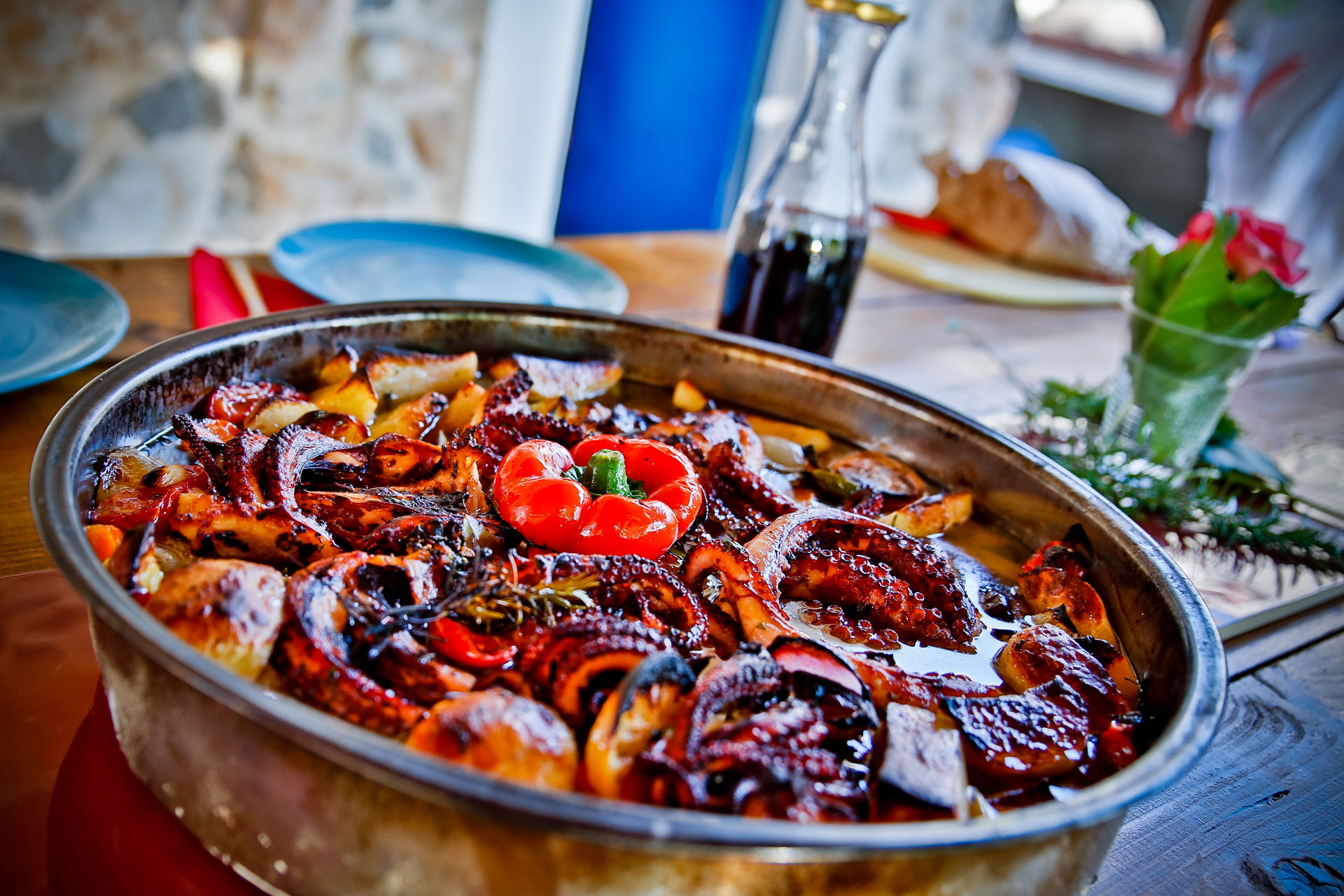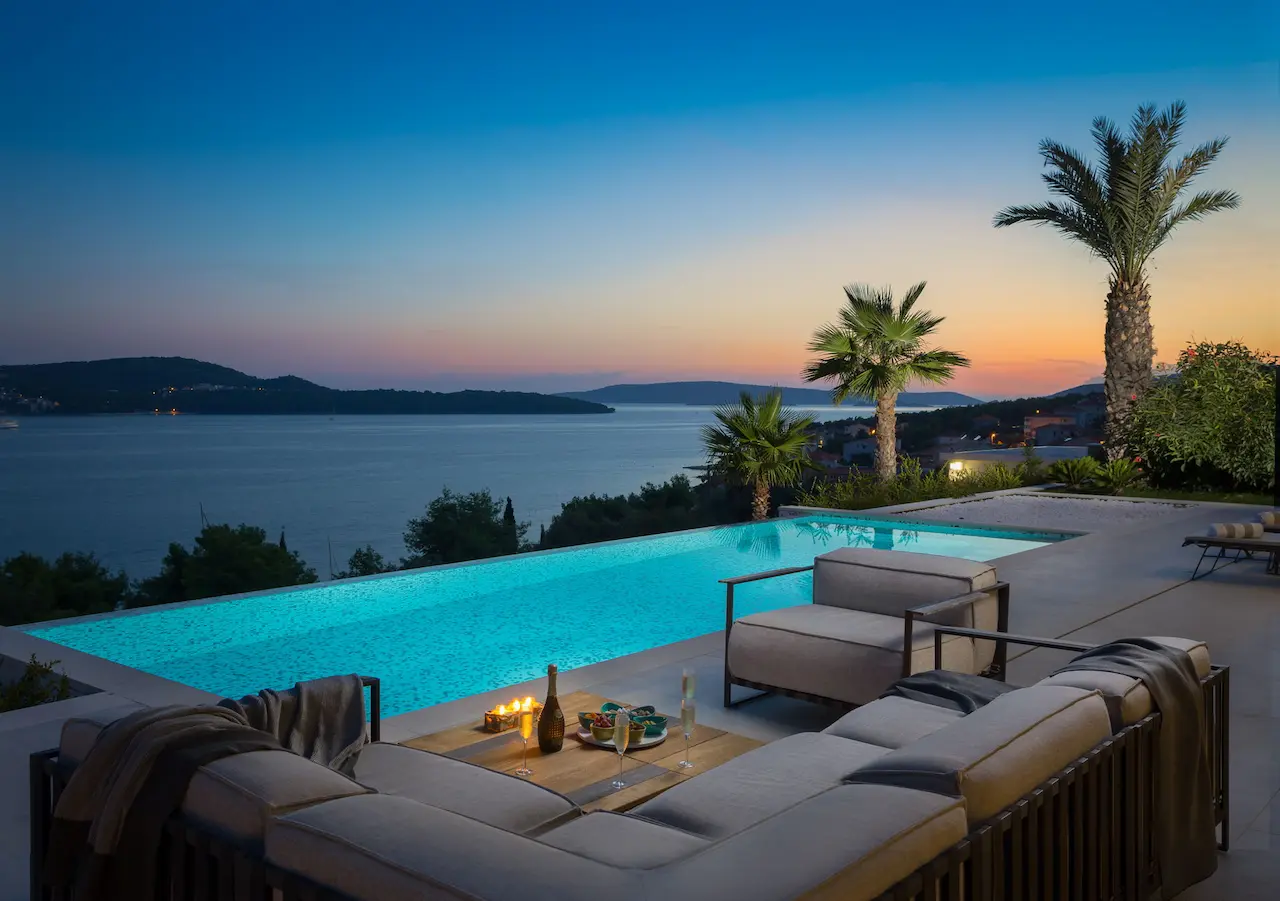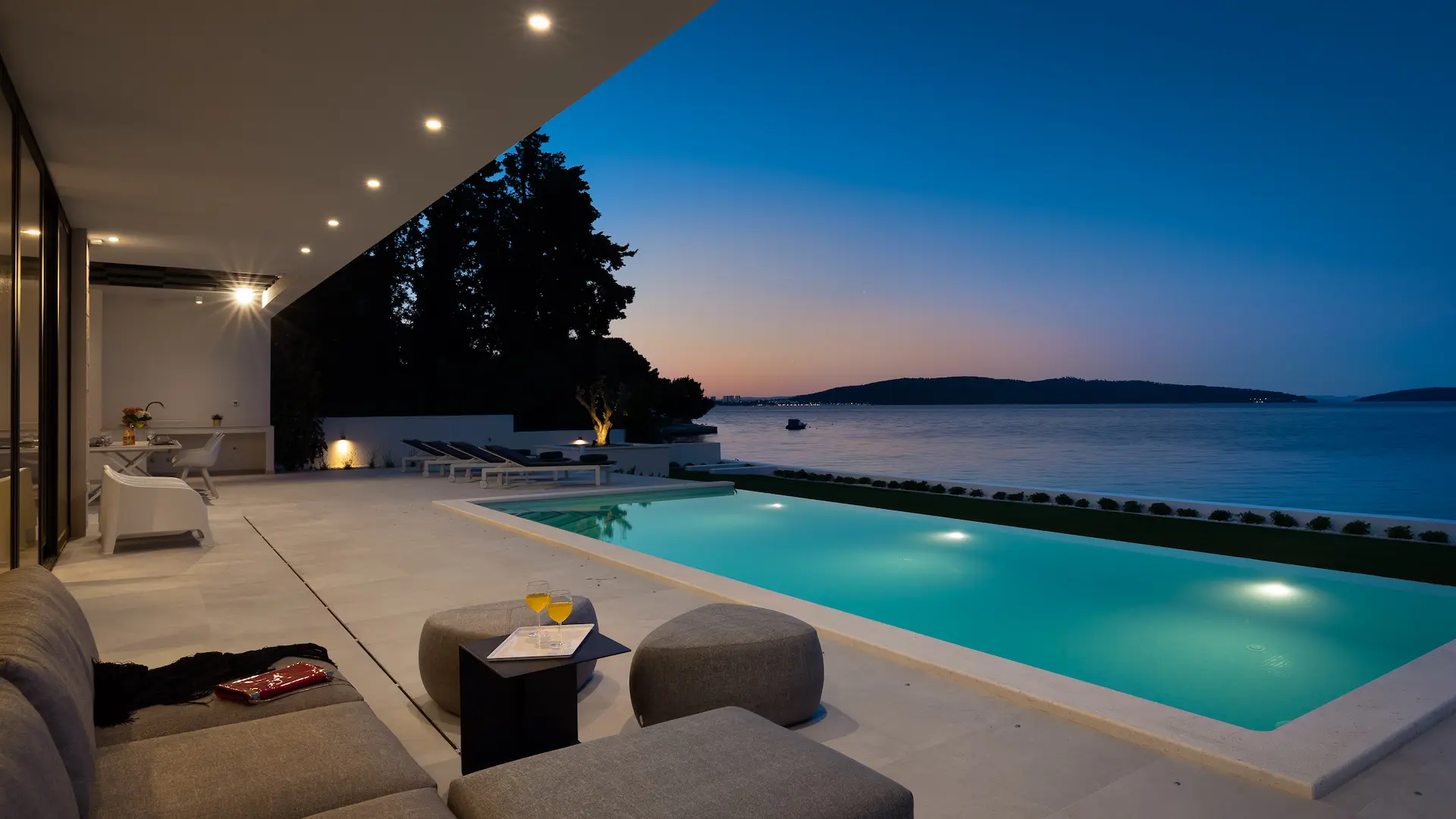Are you planning a holiday to Europe? Some of the most popular destinations include Portugal, Spain, and Croatia. To help you make your decision and choose the one that best fits your expectations, we’ll present each one of them.
Which Country is Best for Swimming
When looking for a destination in Europe, most people often consider the beaches. After all, that’s where you’ll be going almost every day.
Sea and Beaches in Portugal
Portugal is situated on the Atlantic Ocean. The most popular beaches are in the Algarve region in the south and near Lisbon on the west. Many holidaymakers also choose the Azores (Açores) and the Madeira Islands.

Praia da Cordoama Beach, Portugal
The beaches in Portugal are mostly sandy, surrounded by big cliffs and rock formations, with deep blue waters. The ocean makes big waves, so they are especially popular among surfers.
However, the ocean temperature is often cold, particularly on the west and north coasts where the currents are the strongest. The Algarve’s coast is warmer, but it’s still cooler than the Mediterranean. Still, many people swim, especially in the hot summer months.
Sea and Beaches in Spain
Spain is situated right next to Portugal and borders two seas and an ocean.

Cala del Moraig Beach, Spain
The Mediterranean Sea is the warmest and calmest, so it’s the best for chill days on the beach or boat trips. The beaches have fine, white sand and clear, turquoise waters. If this is up your alley, go to Valencia, Catalonia, or parts of Andalusia.
On the other hand, the Atlantic Ocean has constant currents and waves, so it’s popular for nautical sports like sailing. It includes the Canary Islands and parts of Andalusia and Galicia. The beaches are more rugged compared to the Mediterranean, but less crowded.
Finally, the Cantabrian Sea covers regions of the Basque Country, Cantabria, Asturias, and the North of Galicia. This sea is the coldest, with long sandy beaches and big waves, so it’s best for surfing.
Sea and Beaches in Croatia
Croatia is situated on the Adriatic Sea, which is a part of the Mediterranean Sea. It has the most indented coastline of any Mediterranean country, with over 1,200 islands, islets, rocks, and reefs.

Zlatni Rat (Golden Cape) Beach, Brac Island
The beaches are mostly pebbly, but there are a few sandy beaches, all with crystal-clear turquoise waters, especially on the islands. The most beautiful beaches are situated on the islands, like Zlatni Rat (Golden Cape) Beach on Brac Island, Stiniva Cove on Vis Island, and sandy Sakarun Beach on Dugi Otok.
Although Croatia is a smaller country than Portugal or Spain, it has a much longer coastline – 5,835 kilometers of it.
The Croatian side of the Adriatic Sea is one of the cleanest, clearest, and warmest seas in Europe. It has high salinity with many minerals, which is good for skin health, and makes it great for swimming. What’s more, its great visibility and the abundance of marine life make it attractive for snorkeling and diving.
Best Beaches
If you’re looking for a beach holiday and lots of swimming, Croatia is the best option. Surfers should aim for Portugal. Spain is the most diverse, but it’s hard to visit all parts of the country in one trip.
What Country has the Best Food
For most people, one of the highlights of every holiday is trying out local specialties. All of these countries take great pride in their cuisine. Here, you’ll learn a little about each of them.
Food in Portugal
Portugal is most popular for its fresh seafood from the Atlantic, stews, and tasty pastries.

Grilled Sardines
For example, you can have fish bacalhau (salt cod) in many ways. We recommend crispy cakes “bolinhos de bacalhau” as a starter or rich and creamy shredded “bacalhau à brás” with onions, potatoes, and eggs as a main dish. If you’re in the mood for finger food, order Sardinhas assadas (grilled sardines).
Portuguese also like to eat meat. Traditional Portuguese stew Cozido à Portuguesa consists of beef, pork, or chicken, sausages, and vegetables. On the other hand, you can enjoy Francesinha, a delicious meat sandwich with cheese and sauce.
For dessert, try the delicious pastel de nata (custard tart), made from crisp, flaky puff pastry crust filled with rich, creamy custard.
Food in Spain
You’ll recognize Spanish cuisine by its bold flavors, vibrant colors, and delicious tastes. The offer is very diverse.
For starters, try the refreshing cold soup Andalusian gazpacho made from raw, blended vegetables.

Seafood Paella
Next, Paella is a must-try main dish, with all ingredients cooked and served in one pan. It’s made from rice, saffron, vegetables, and chicken, seafood, or a mix of both.
However, ordering tapas lets you try various flavors and share the food with your group. These small plates are a central part of Spanish dining.
We also suggesttortilla española. Basically, it’s a potato and onion omelette served at room temperature. For some extra flavor, you can add some red peppers, Spanish ham, cheese, asparagus, or mushrooms.
Key ingredients of Spanish cuisine are olive oil, tomatoes, garlic, onions, paprika, saffron, and seafood or meats like chicken, ham, and pork.
Food in Croatia
Croatia has a diverse gastronomy. It’s a unique mix of Mediterranean and Central European cuisine. You can see influences from Italians, Austrians, Hungarians, and Turks. If you’re traveling to the coast or the islands, you’ll mostly enjoy Mediterranean dishes.
When in Croatia, we recommend trying traditional Dalmatian prosciutto and Pag cheese as tasty cold appetizers.
If you’re in the mood for a warm, seafood appetizer, we suggest black risotto. It’s a staple dish at every Croatian celebration. If you’re in Istria, try Istrian fuzi (pasta) with truffles.
 Octopus under peka
Octopus under peka
Must-try main courses include stews or “ispod peke” dishes. “Peka” is a large metal bell, under which you can prepare meats like lamb, veal, or pork, or seafood like octopus. Another local delicacy is Lamb on a spit. It’s a traditional roasting method where a whole lamb rotates over a fire or grill.
Brudet and buzara are the most popular seafood stews. In Dalmatia, you should try Pasticada, a very popular meat stew. It’s made from beef and served with gnocchi, a special type of potato dumplings.
Traditional Croatian meals are usually prepared from fresh meat or seafood and seasonal vegetables. Key ingredients include olive oil, garlic, onions, paprika, and potatoes.
Best Food
Each country has its own tasty traditional dishes, so it’s hard to pick a favorite. While Portugal and Spain are neighboring countries with similar gastronomy, Croatia offers a unique mix of Mediterranean and Central European delicacies.
Which Country is the Safest
When you travel, you probably want to be sure that the destination is safe, especially if you’re a solo traveler or traveling as a family with children.
For this blog, we’ll focus on Eurostat’s 2023 data. Eurostat is the statistical office of the European Union, and all 3 countries are members of the EU. According to them,Croatia is the safest country to visit in the EU.
In Croatia, from 1.2 % to 1.5 % of people reported experiencing crime, violence, or vandalism.This is the lowest score in the EU, which makes Croatia the safest.
For comparison, the average in the EU was between 9.6% and 12.3%. Here’s a full table breakdown of the perceived local crime, violence, and vandalism rate in 2023.
| Country | Perceived Crime Rate | EU Rank |
| Croatia | 1.2 - 1.5 % | 🥇 1st – lowest in EU |
| Portugal | 5 - 6 % | Mid‑range in EU |
| Spain | 7-8 % | Mid‑to-upper range in EU |
📊 Eurostat: Perceived Local Crime / Violence / Vandalism in 2023
Although Portugal and Spain register higher than Croatia, they’re both below the EU average.
Crime rate in Croatia is the lowest, followed by Portugal, where it’s low to moderate. In Spain, the rate is slightly higher than in Portugal. Yet, all three countries are well below the EU average.

National Park Krka Waterfalls, Croatia
In conclusion, all three countries are safe, but Croatia is the safest country in Europe.
Which Country is the Best Value for Money
When comparing prices among Spain, Portugal, and Croatia, consider which region or city you’ll be visiting.
Keep in mind that coastal towns and islands have noticeably higher prices than inland regions. This is especially true in summer.
Prices of Food and Drinks
For example,an average meal price for one person at an inexpensive restaurantis €11 in Portugal, €12 in Croatia, and €14 in Spain. If you’re looking for a fine dining experience, the prices are from €50 up to €100+ per person in each country.
In terms of groceries, Portugal is slightly more expensive than Spain and Croatia. This likely reflects frequent dining at restaurants. According to Numbeo, a single person will spend ~€150‑200 monthly for groceries in Croatia, around €200 in Spain, and around €300 in Portugal.
The prices of coffee are around €1–2 in all three countries, depending on location.
Conclusion: Food and drinks prices are relatively the same, with Portugal being the cheapest for eating out, and Croatia for groceries.
Prices of Accommodation
Finally, let’s talk aboutaccommodation. All three countries predominantly offer private rentals, and villas are the most comfortable, spacious, and provide the most personalized experience. Furthermore, villas sleep from 8 to 12 guests. If your villa costs €1,000 per night, each person will pay approximately €100.
Prices of luxury villas in Croatia, Portugal, and Spain depend on their location, number of beds, and season. Let’s say you’re looking for a luxury villa with a pool and sea views during the summer months (from June to September).
The Algarve is Portugal’s most attractive region, for example, Quinta do Lago or Vilamoura. It’s also the busiest and offers the best sea views. Luxury villas in Portugal cost between €1,300 and €4,300+ per night, but most villas are above €2,300.
In Spain, a typical rate for a luxury villa is from €1,500 to €4,000+ per night. The most popular destinations are Mallorca, Costa del Sol, and Ibiza. They are very touristy and crowded, but you’ll easily find a villa with sea views.

Sunset and sea view from Ultraluxury Villa Elyzeum with Heated Pool, Croatia
Finally, Dubrovnik, Hvar Island, and the Istrian Peninsula are the most popular destinations in Croatia. However, you can find privacy at many hidden gems along the coast and on the smaller islands. Thanks to its long coast, many villas are beachfront or relatively close to the sea, so you’ll be able to enjoy stunning views. You’ll pay from €700 to €3,000+ per night in Croatia, with top-tier villas renting for €2,500+ per night.
Conclusion:The accommodation prices depend on many factors. If you’re renting a seafront villa, you’ll probably get the best deal in Croatia. If you want to save, we recommend the inland regions of each country, where you’ll find listings with lower prices.
Summary: Which is Better for Holidays
What do you think, which European country is the best for holidays: Croatia, Spain, or Portugal? The answer depends mostly on your preference. Portugal has the most affordable restaurants, Spain has the most diverse landscape, and Croatia is the best for villa holidays by the beach.
If you like Croatia the most, we recommend booking your holidays with VIP Holiday Booker, Croatia’s leading agency specializing in luxury villa rentals. Contact us at [email protected], and our professional VIP Concierge agents will help you arrange your holidays.
